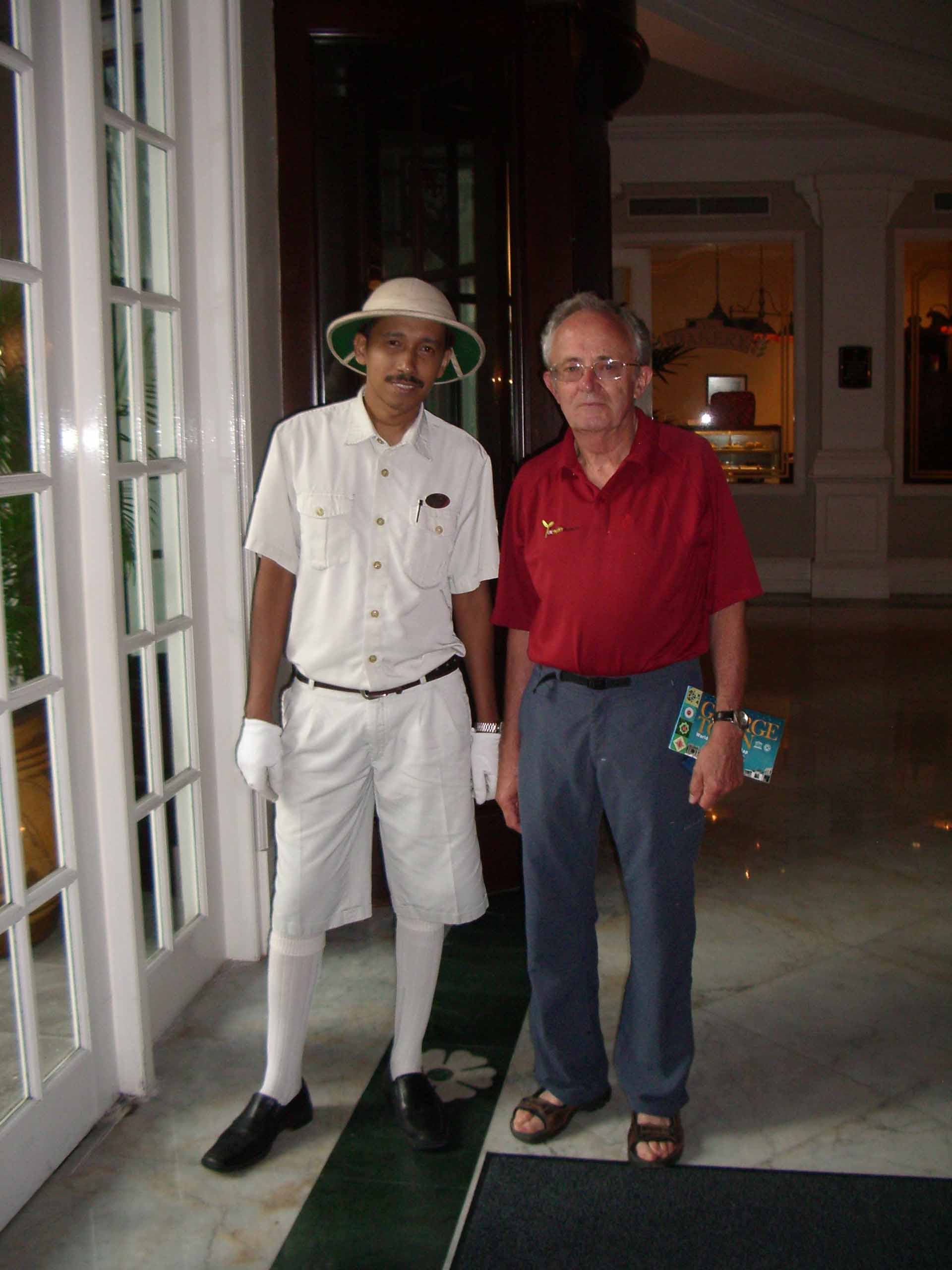‘Pre-border’ Perambulations and Progress
As its fourth birthday approaches, those involved with the Cooperative Research Centre for National Plant Biosecurity have been taking stock of its genesis and progress to date. We have also been considering the way forward to ‘end-of-term' in 2012 and what may lie beyond.
The early stages of the CRC were appropriately devoted to developing the national biosecurity scientific network which was fundamental to our bid for support. However, the importance of linking a national initiative to international biosecurity developments has always been front of mind.
In 2005, CEO, Dr Simon McKirdy and several members of the Board took part in the New Zealand Biosecurity Summit. The Summit gave us the opportunity to developed relationships which have allowed us to keep in close touch with biosecurity happenings across the Tasman. The CRC was also invited to participate as a member of the QUADS Scientific Collaboration working group. This group has members from Canada, the USA, Australia and New Zealand. The QUADS alliance is fostering a number of biosecurity developments, particularly in the curriculum and publishing arenas.
Research Leader, David Eagling has taken a leading role in promoting links with Indonesia, notably through a community awareness initiative which links village communities in Bali with indigenous communities in Australian's northern border regions. Project Leader, Gary Kong, among others has also been active in reaching out to our neighbours in Asia through the promotion of the remote microscope network.
Futhermore, almost a year ago a number of CRC representatives, along with participants from nine other countries took part in a two-week International Master Class in Plant Biosecurity in Kuala Lumpur, Malaysia. The Master Class was held, with the assistance of the Malaysian Ministry for Agriculture and Agro-Based Industries and CABI, under the auspices of The Crawford Fund. I have previously written about the Master Class, however I would like to highlight recent events where establishing these networks in June 2008 are paying dividends.
While travelling on behalf of the Global Crop Diversity Trust, I was able to make several CRCNPB related visits in South East Asia during the period 27 April to 5 May. In Singapore, on 27 April, I met Ms Jenny Yap, Head of the Plant Pathology Branch and Mr Ong Keng Ho, Deputy Director (Diagnostic Services) of the Agri-Food and Veterinary Authority of Singapore (AVA). Jenny Yap was a lively contributor to the International Master Class and is enthusiastic at the prospect of building strong scientific links with the CRCNPB. Discussion with our Singaporean colleagues focused on components of the ‘Plant Biosecurity Toolbox' which had been introduced to AVA by Research Leader, David Eagling during a recent visit. The outcome of the meeting was strong encouragement to move to a more formal relationship with AVA.
While in Singapore, I was also able to meet representatives of Terrappin Pty Ltd, organisers of the conference ‘Agriculture Asia Outlook 2009' at which I shall be presenting on behalf of the CRCNPB in Singapore in September of this year www.terrapinn.com/2009/agriasia.
On 1 May, I met Edgardo Carandang of the Department of International Cooperation, Ministry of Agriculture and Rural Development of the Philippines, another participant in the International Master Class. Mr Carandang's Department will be interested to learn of developments vis-a-vis the establishment of the Asian Regional Diagnostics Network (ARDN) and is another potential collaborator in the CRCNPB's Asian network.
Finally, on May 4 an audience of more than 100 academics and representatives of the Ministry for Science, Technology and Innovation and the Ministry of Agriculture and Agro-based Industries attended my invited presentation ‘Biosecurity, Biodiversity and Plant Genetic Resources' at Universiti Putra Malaysia (UPM), Kuala Lumpur. I also presented on 5 May to some 70 staff and students of the Asian Institute for Medical Science and Technology in Penang. Malaysia will be a critical player in the establishment of the ARDN and the former meeting, in particular, is important in this respect. Also, UPM has strengths in disciplines which are important to the CRCNPB and we will seek to establish project linkages.
All of these activities relate to the importance of dealing with biosecurity matters, as far as possible offshore or ‘pre-border,' a point emphasised in the 1997 Nairn Review and again, in the 2008 Beale Review.
At the time of these presentations Swine Flu had just ‘broken-out' of Mexico with reports of suspected cases in Hong Kong. I referred to this biosecurity risk to people and the rapidity with which it might travel in our ‘shrinking world'. Little more than a month later Swine Flu has been declared a pandemic. Has the story of rust strain Ug99 occupied as many column inches or sound grabs as swine flu I wonder? I suspect not, but if it continues its predicted spread, the plant biosecurity risk from this one pathogen could far exceed the impact of Swine Flu. Something to think about, and certainly a good reason to maintain the CRCNPB's efforts to develop scientific linkages and expertise offshore, and to build capacity to deal with potential incoming biosecurity risks pre-border.

Professor John Lovett prepares for field work

